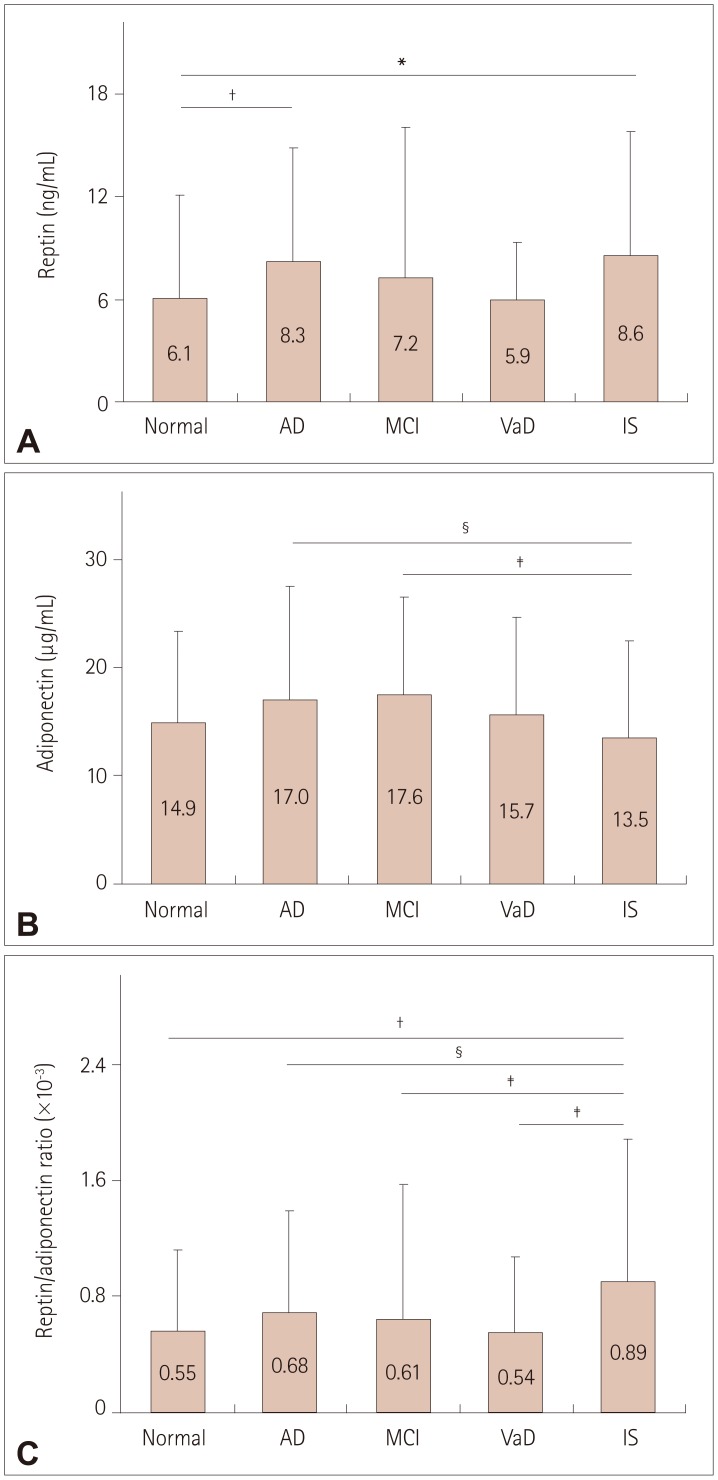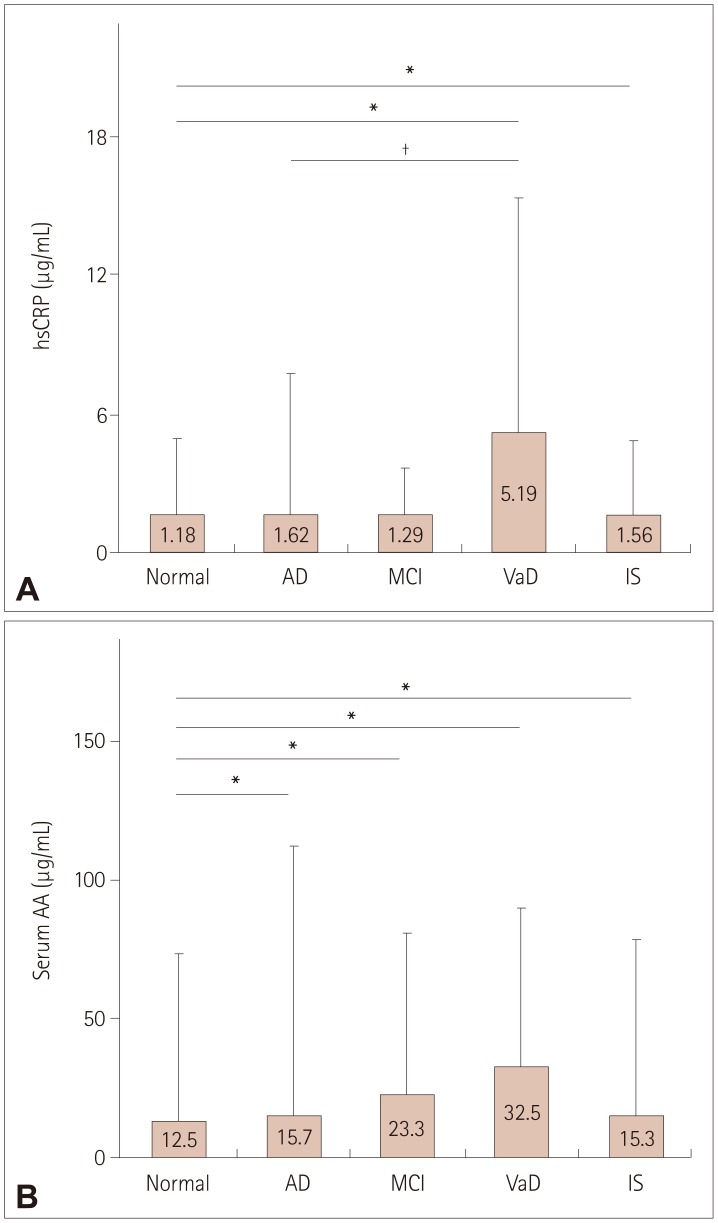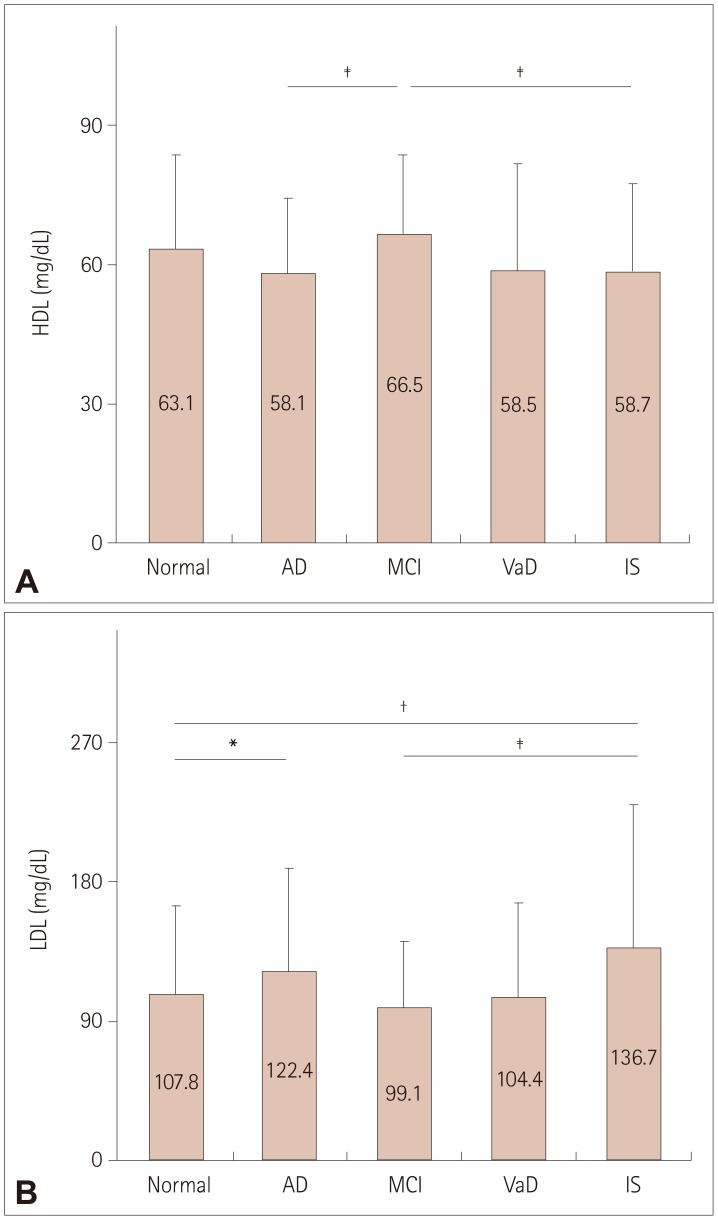1. Kraal JJ, Peek N, van den Akker-Van Marle ME, Kemps HM. Effects and costs of home-based training with telemonitoring guidance in low to moderate risk patients entering cardiac rehabilitation: The FIT@Home study. BMC Cardiovasc Disord. 2013; 13:82. PMID:
24103384.

2. Hishikawa N, Fukui Y, Sato K, Kono S, Yamashita T, Ohta Y, et al. Characteristic features of cognitive, affective and daily living functions of late-elderly dementia. Geriatr Gerontol Int. 2016; 16:458–465. PMID:
25952646.

3. Rizzi L, Rosset I, Roriz-Cruz M. Global epidemiology of dementia: Alzheimer's and vascular types. Biomed Res Int. 2014; 2014:908915. PMID:
25089278.

4. Lopez OL. Mild cognitive impairment. Continuum (Minneap Minn). 2013; 19(2 Dementia):411–424. PMID:
23558486.

5. Takashima N, Arima H, Kita Y, Fujii T, Miyamatsu N, Komori M, et al. Incidence, management and short-term outcome of stroke in a general population of 1.4 million Japanese–Shiga Stroke Registry. Circ J. 2017; 81:1636–1646. PMID:
28579600.
6. Kume A, Kurotani K, Sato M, Ejima Y, Pham NM, Nanri A, et al. Polyunsaturated fatty acids in serum and homocysteine concentrations in Japanese men and women: a cross-sectional study. Nutr Metab (Lond). 2013; 10:41. PMID:
23758810.

7. Yurko-Mauro K. Cognitive and cardiovascular benefits of docosahexaenoic acid in aging and cognitive decline. Curr Alzheimer Res. 2010; 7:190–196. PMID:
20088810.

8. Diop SB, Bertaux K, Vasanthi D, Sarkeshik A, Goirand B, Aragnol D, et al. Reptin and Pontin function antagonistically with PcG and TrxG complexes to mediate Hox gene control. EMBO Rep. 2008; 9:260–266. PMID:
18259215.

9. Stojanović S, Ilić MD, Ilić S, Petrović D, Djukić S. The significance of adiponectin as a biomarker in metabolic syndrome and/or coronary artery disease. Vojnosanit Pregl. 2015; 72:779–784. PMID:
26554109.

10. Kliper E, Bashat DB, Bornstein NM, Shenhar-Tsarfaty S, Hallevi H, Auriel E, et al. Cognitive decline after stroke: relation to inflammatory biomarkers and hippocampal volume. Stroke. 2013; 44:1433–1435. PMID:
23444307.
11. Urieli-Shoval S, Linke RP, Matzner Y. Expression and function of serum amyloid A, a major acute-phase protein, in normal and disease states. Curr Opin Hematol. 2000; 7:64–69. PMID:
10608507.

12. Hottman DA, Chernick D, Cheng S, Wang Z, Li L. HDL and cognition in neurodegenerative disorders. Neurobiol Dis. 2014; 72 Pt A:22–36. PMID:
25131449.

13. Stampfer MJ. Cardiovascular disease and Alzheimer's disease: common links. J Intern Med. 2006; 260:211–223. PMID:
16918818.

14. McKhann GM, Knopman DS, Chertkow H, Hyman BT, Jack CR Jr, Kawas CH, et al. The diagnosis of dementia due to Alzheimer's disease: recommendations from the National Institute on Aging-Alzheimer's Association workgroups on diagnostic guidelines for Alzheimer's disease. Alzheimers Dement. 2011; 7:263–269. PMID:
21514250.

15. DeLaPaz RL, Wippold FJ 2nd, Cornelius RS, Amin-Hanjani S, Angtuaco EJ, Broderick DF, et al. ACR Appropriateness Criteria® on cerebrovascular disease. J Am Coll Radiol. 2011; 8:532–538. PMID:
21807345.

16. Simopoulos AP. An increase in the omega-6/omega-3 fatty acid ratio increases the risk for obesity. Nutrients. 2016; 8:128. PMID:
26950145.

17. Kim M, Nam JH, Oh DH, Park Y. Erythrocyte α-linolenic acid is associated with the risk for mild dementia in Korean elderly. Nutr Res. 2010; 30:756–761. PMID:
21130294.

18. Yurko-Mauro K, McCarthy D, Rom D, Nelson EB, Ryan AS, Blackwell A, et al. Beneficial effects of docosahexaenoic acid on cognition in age-related cognitive decline. Alzheimers Dement. 2010; 6:456–464. PMID:
20434961.
19. Grigoletto A, Lestienne P, Rosenbaum J. The multifaceted proteins Reptin and Pontin as major players in cancer. Biochim Biophys Acta. 2011; 1815:147–157. PMID:
21111787.

20. Song J, Lee WT, Park KA, Lee JE. Association between risk factors for vascular dementia and adiponectin. Biomed Res Int. 2014; 2014:261672. PMID:
24860814.

21. Sener U, Uludag IF, Kose S, Ozcelik M, Zorlu Y. Is adiponectin a risk factor for transient ischaemic attacks? Endokrynol Pol. 2015; 66:214–218. PMID:
26136129.
22. Khemka VK, Bagchi D, Bandyopadhyay K, Bir A, Chattopadhyay M, Biswas A, et al. Altered serum levels of adipokines and insulin in probable Alzheimer's disease. J Alzheimers Dis. 2014; 41:525–533. PMID:
24625795.

23. Shimabukuro M, Higa N, Asahi T, Oshiro Y, Takasu N, Tagawa T, et al. Hypoadiponectinemia is closely linked to endothelial dysfunction in man. J Clin Endocrinol Metab. 2003; 88:3236–3240. PMID:
12843170.

24. Sasaki M, Otani T, Kawakami M, Ishikawa SE. Elevation of plasma retinol-binding protein 4 and reduction of plasma adiponectin in subjects with cerebral infarction. Metabolism. 2010; 59:527–532. PMID:
19846170.

25. Chen MP, Tsai JC, Chung FM, Yang SS, Hsing LL, Shin SJ, et al. Hypoadiponectinemia is associated with ischemic cerebrovascular disease. Arterioscler Thromb Vasc Biol. 2005; 25:821–826. PMID:
15692106.

26. Hu SL, Xiong W, Dai ZQ, Zhao HL, Feng H. Cognitive changes during prolonged stay at high altitude and its correlation with C-reactive protein. PLoS One. 2016; 11:e0146290. PMID:
26731740.

27. Dullaart RP. Increased coronary heart disease risk determined by high high-density lipoprotein cholesterol and C-reactive protein: modulation by variation in the CETP gene. Arterioscler Thromb Vasc Biol. 2010; 30:1502–1503. PMID:
20631348.
28. Yokoyama S. Unique features of high-density lipoproteins in the Japanese: in population and in genetic factors. Nutrients. 2015; 7:2359–2381. PMID:
25849946.

29. Zanchetti A, Liu L, Mancia G, Parati G, Grassi G, Stramba-Badiale M, et al. Blood pressure and low-density lipoprotein-cholesterol lowering for prevention of strokes and cognitive decline: a review of available trial evidence. J Hypertens. 2014; 32:1741–1750. PMID:
24979302.
30. Lim SL, Gao Q, Nyunt MS, Gong L, Lunaria JB, Lim ML, et al. Vascular health indices and cognitive domain function: Singapore longitudinal ageing studies. J Alzheimers Dis. 2016; 50:27–40. PMID:
26639958.









 PDF
PDF ePub
ePub Citation
Citation Print
Print



 XML Download
XML Download